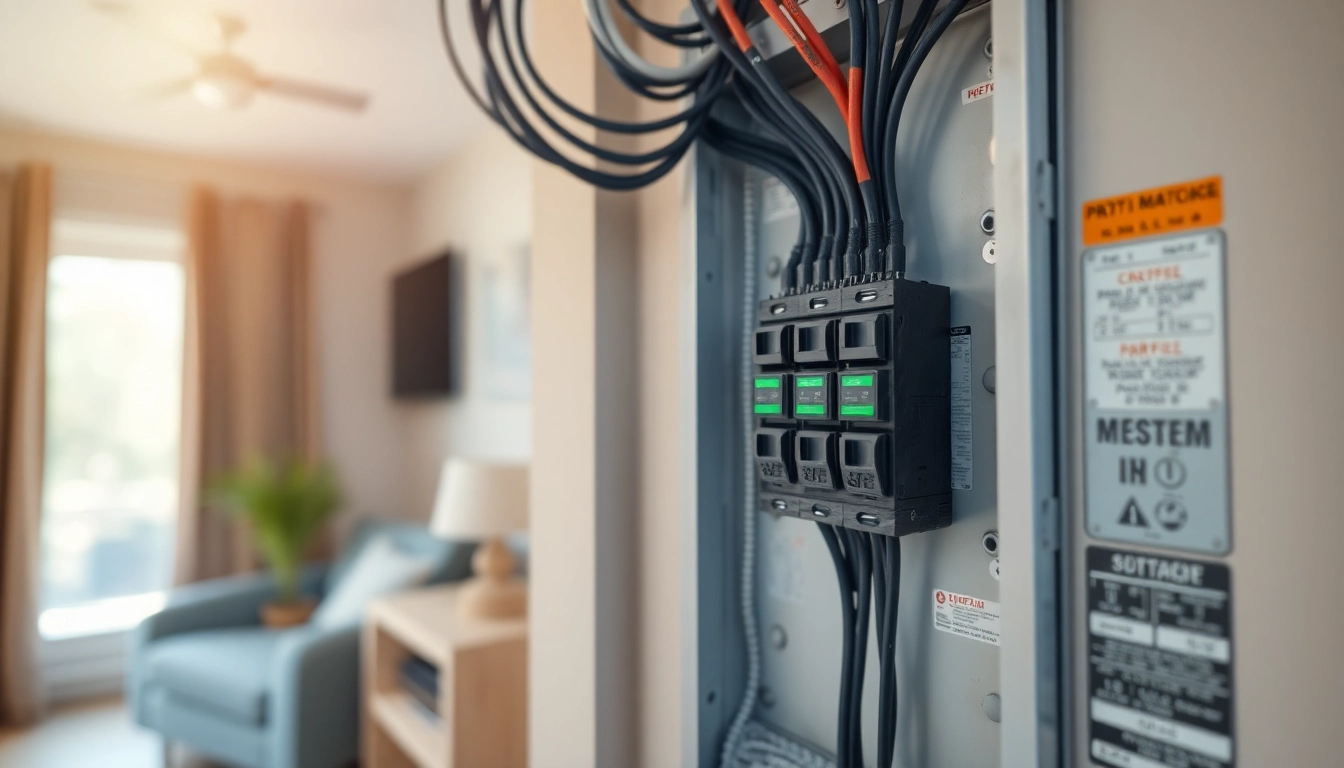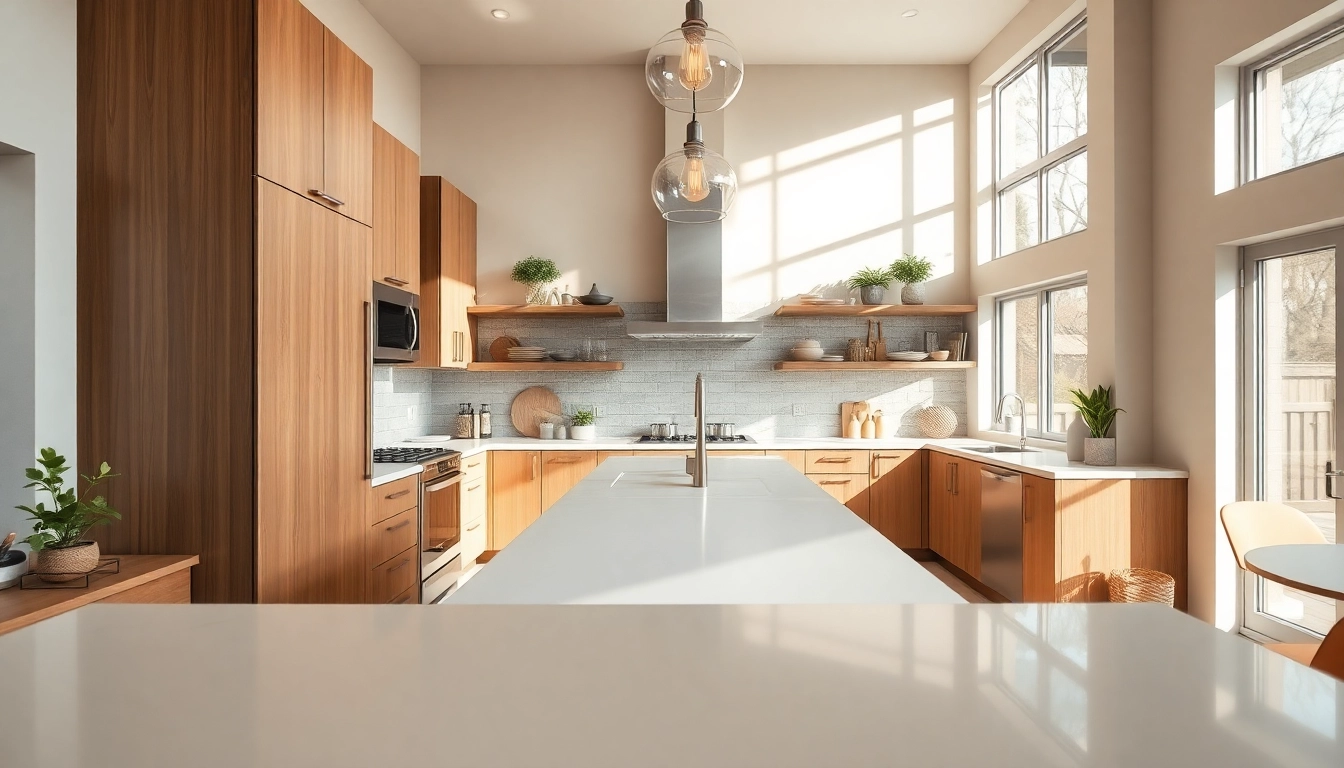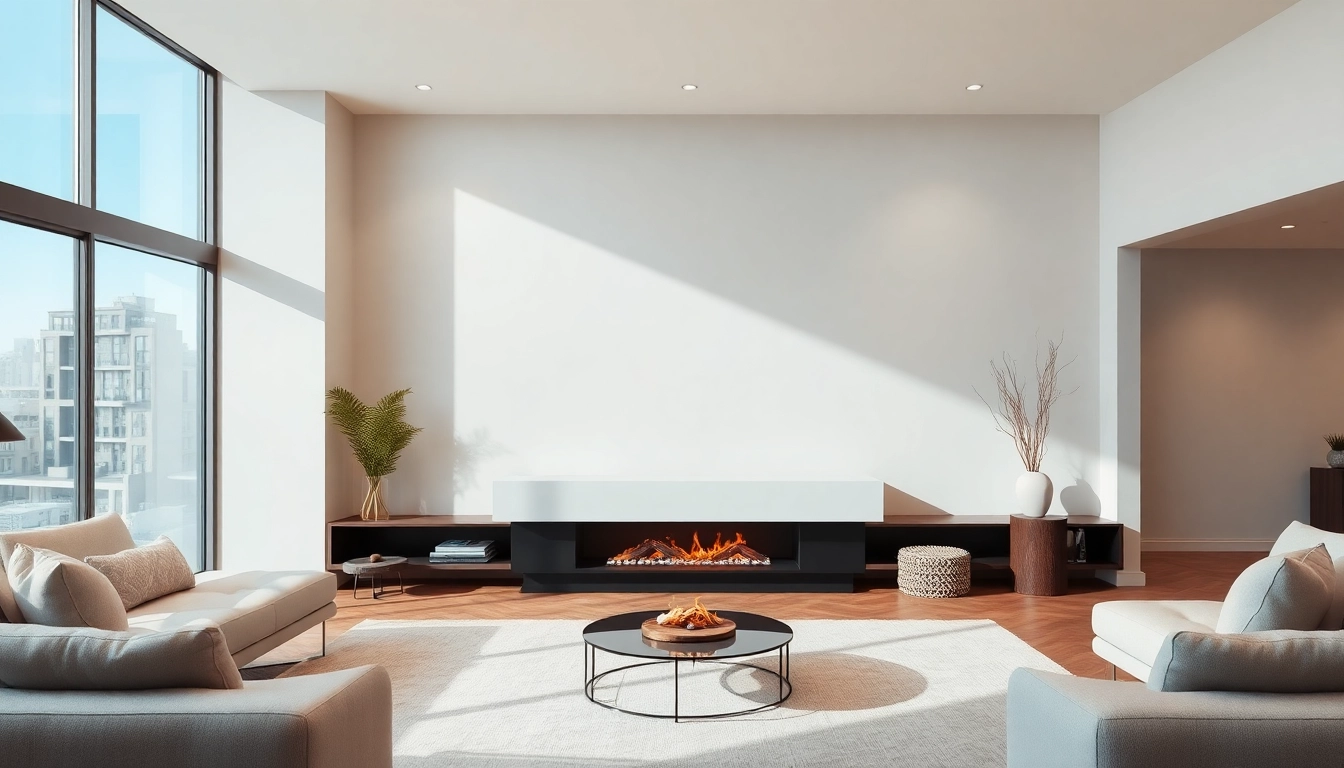Understanding Electrical Panel Basics
An Electrical Panel is a crucial component in the electrical infrastructure of homes and commercial spaces. It acts as the central hub for distributing electricity to various circuits throughout a building. Understanding the intricacies of electrical panels, their components, and their functions is vital for homeowners and business owners alike to maintain a safe and effective electrical system.
What is an Electrical Panel?
The electrical panel, often referred to as a breaker box or service panel, is where the electrical power enters a building and is distributed to different circuits, each designated for various appliances and outlets. It regulates the flow of electricity and protects wiring from overloads through circuit breakers or fuses. The panel significantly contributes to the safety and efficiency of the electrical system.
Components of an Electrical Panel
Understanding the key components of an electrical panel is essential. Here is a breakdown:
- Main Breaker: This is the primary switch that controls power to the entire panel. It allows for the complete disconnection of electricity during maintenance.
- Circuit Breakers: These are individual switches that protect specific circuits by interrupting the flow of electricity in case of overloads. They come in various amp ratings depending on the circuit’s requirements.
- Bus Bars: These metal bars in the panel provide pathways for electricity to flow from the main breaker to the circuit breakers.
- Grounding System: This ensures that excess electricity, such as from surges or faults, is safely grounded away from living areas to prevent electrical hazards.
- Neutral Bar: It connects all neutral wires from the circuits. This helps manage the return path for electrical current.
How Electrical Panels Function in Homes
The electrical panel functions by receiving electricity from the main power supply, which usually enters the panel through underground or overhead service lines. Once inside, the current flows to the main breaker, where it can be distributed to various circuits via the circuit breakers. Here’s how a typical operation unfolds:
- Electricity enters the panel.
- The main breaker either allows or interrupts the power flow.
- Each circuit breaker ensures electricity only flows to the connected devices until it exceeds safe limits.
- If a circuit exceeds its designated limit, the breaker trips, cutting the power and preventing hazards.
Signs Your Electrical Panel Needs an Upgrade
Over time, electrical needs may change, and an outdated or insufficient electrical panel can lead to safety hazards and inefficiency. Here are critical signs that it may be time to upgrade your electrical panel:
Frequent Breaker Trips
If you find that circuit breakers are frequently tripping, it may indicate that the panel is struggling to handle your outlet’s electrical load. This can be caused by overloaded circuits or aging equipment. Regular tripping can disrupt daily life and signal that an upgrade is necessary to ensure safety and reliability.
Age of Electrical Panel
The average lifespan of an electrical panel is around 20 to 30 years. If your panel is older than this, it may not meet modern electrical demands or codes, making an upgrade essential for safety and compliance with current regulations.
Increasing Power Demands
As households evolve, power demands usually increase due to more electronics, appliances, and electrical gadgets. If you frequently add new circuits or devices and notice that your existing panel is inadequate, upgrading to a higher-capacity panel can help manage the electrical load more effectively.
Benefits of Upgrading Your Electrical Panel
Upgrading your electrical panel comes with significant advantages, enhancing safety, efficiency, and home value:
Enhanced Safety Features
Newer electrical panels incorporate advanced safety mechanisms that protect against electrical fires and hazards. Improved circuit breakers detect problems swiftly, drastically reducing the risk of damage caused by surges or overloads. Additionally, upgraded panels often come with clear labeling and better organization, allowing for safer handling.
Improved Energy Efficiency
Modern electrical panels are designed to improve energy distribution, decreasing energy loss. Enhanced efficiency can lead to reduced utility bills, making upgrades an appealing financial choice alongside improved performance.
Increased Property Value
Prospective buyers find homes with upgraded electrical systems more attractive, as they indicate safety, modernity, and lower energy costs. Thus, upgrading your electrical panel can increase the resale value of your property significantly.
Steps to Replace an Electrical Panel
Replacing an electrical panel is a critical task that involves detailed planning and execution. Here’s how to approach this process:
Assessing Your Current Electrical Needs
The first step is to evaluate your current and future electrical needs based on the layout of your home, the number of rooms, and appliances you intend to use. Consider consulting a qualified electrician to conduct an electrical load calculation to determine the best panel size to suit your needs.
Choosing the Right Panel for Your Home
Once you understand your electrical load, select a panel that can accommodate it. Panels are typically available in amp ratings of 100, 200, or even higher. A standard modern home usually requires a 200 amp panel to sufficiently handle contemporary power demands.
Hiring Qualified Professionals
Replacing an electrical panel is complex and potentially hazardous. It is essential to hire a licensed electrician experienced in panel upgrades. They will ensure that the installation adheres to local building codes, performs safely, and meets your power needs efficiently.
Cost Considerations for Upgrading Electrical Panels
The decision to upgrade your electrical panel involves several cost considerations, both upfront and long-term, which can impact your overall budget:
Understanding Installation Costs
The cost to replace your electrical panel can vary significantly based on various factors, including local labor rates and the complexity of the job. Homeowners should prepare for a range of costs, typically between $1,000 to $3,000, which may include new equipment and installation fees. Prices can escalate based on required electrical upgrades or additional wiring.
Factors Influencing Panel Prices
Factors such as the chosen panel’s amp capacity, brand, and features can significantly impact the total costs. An increase in panel size necessitates more extensive rewiring and possibly adjustments to the building’s infrastructure, all adding to the final bill.
Potential Long-Term Savings
While the initial investment in upgrading your electrical panel may seem daunting, the potential savings in energy efficiency and reduced need for future repairs can outweigh these costs. Homeowners should view this upgrade as a long-term investment in their property’s safety and value.



